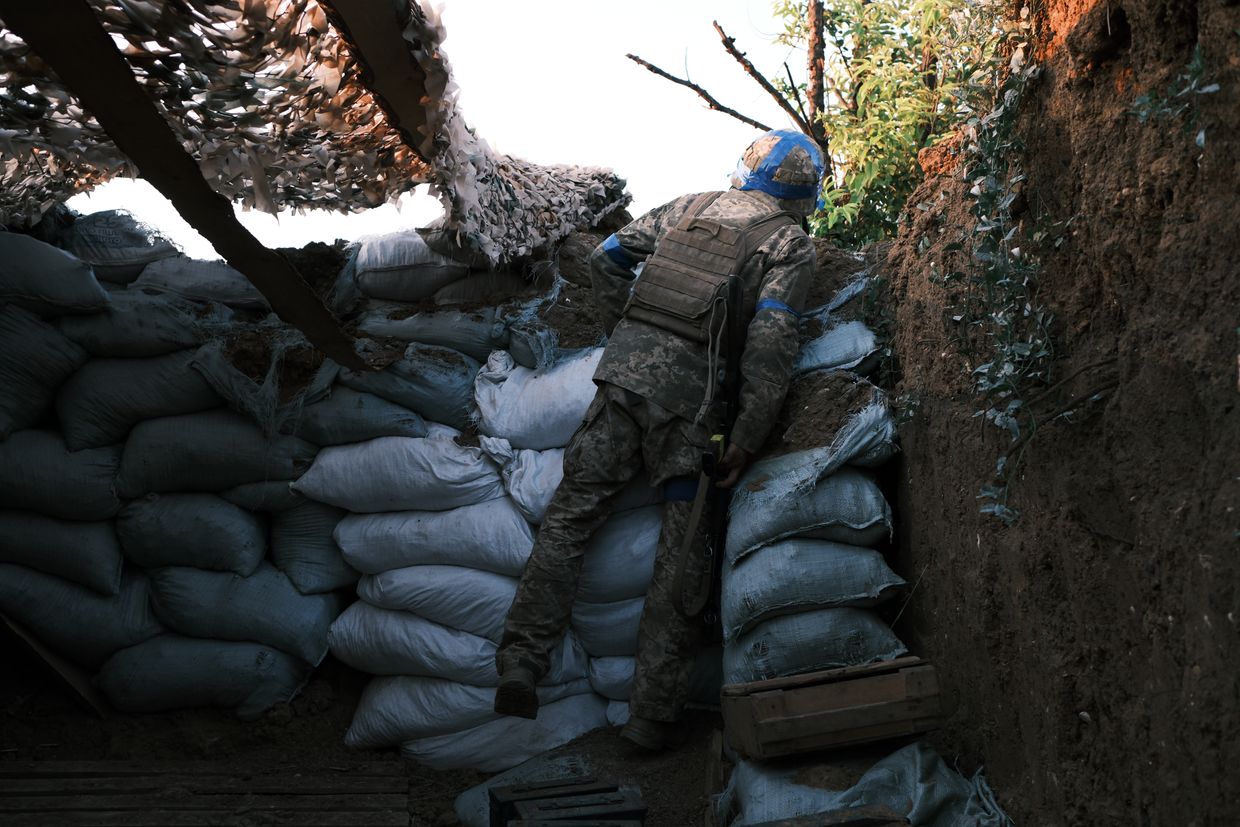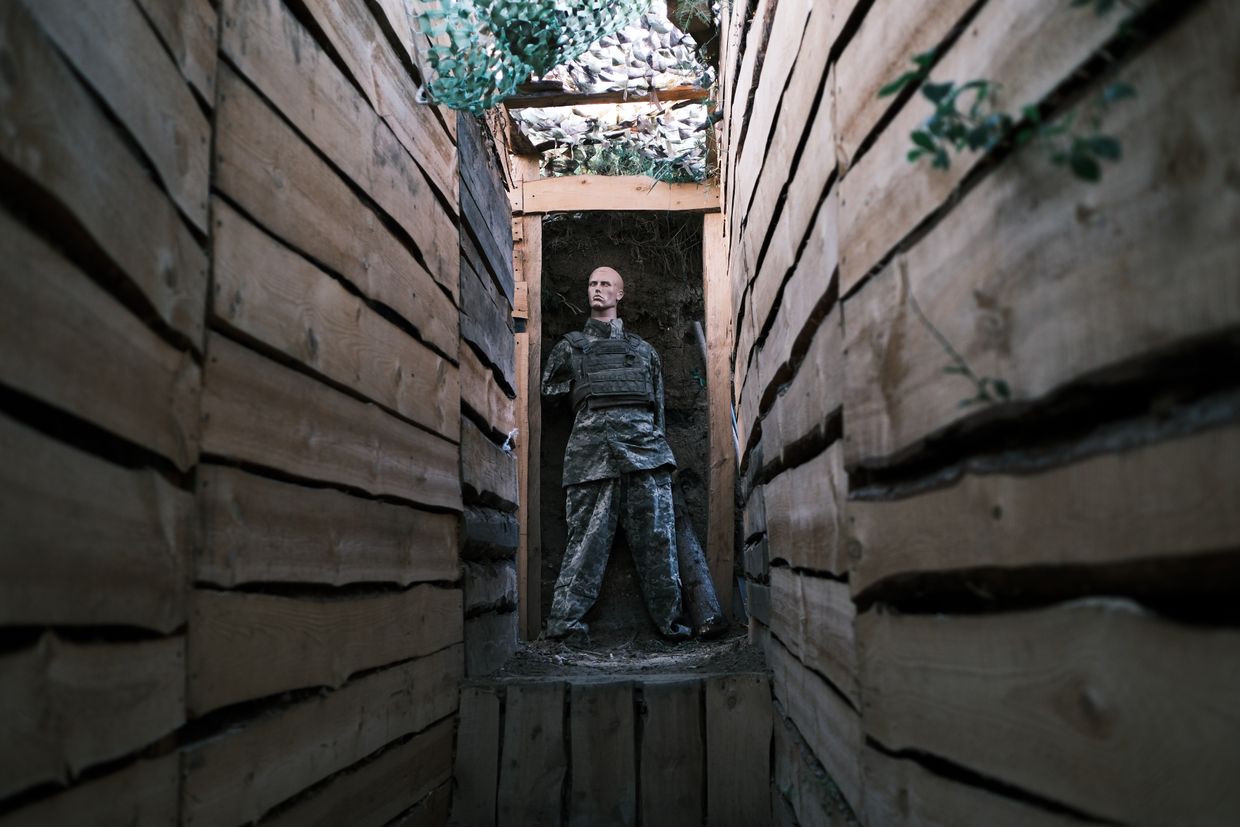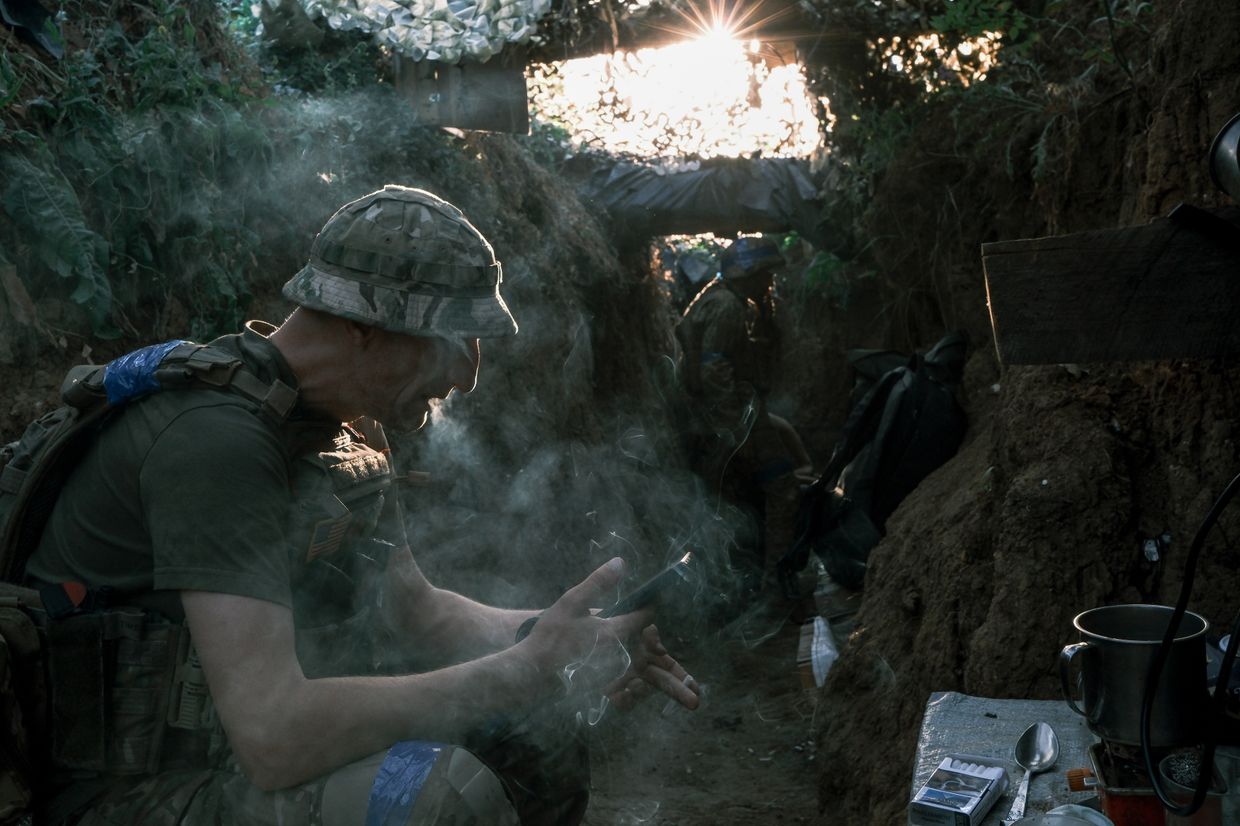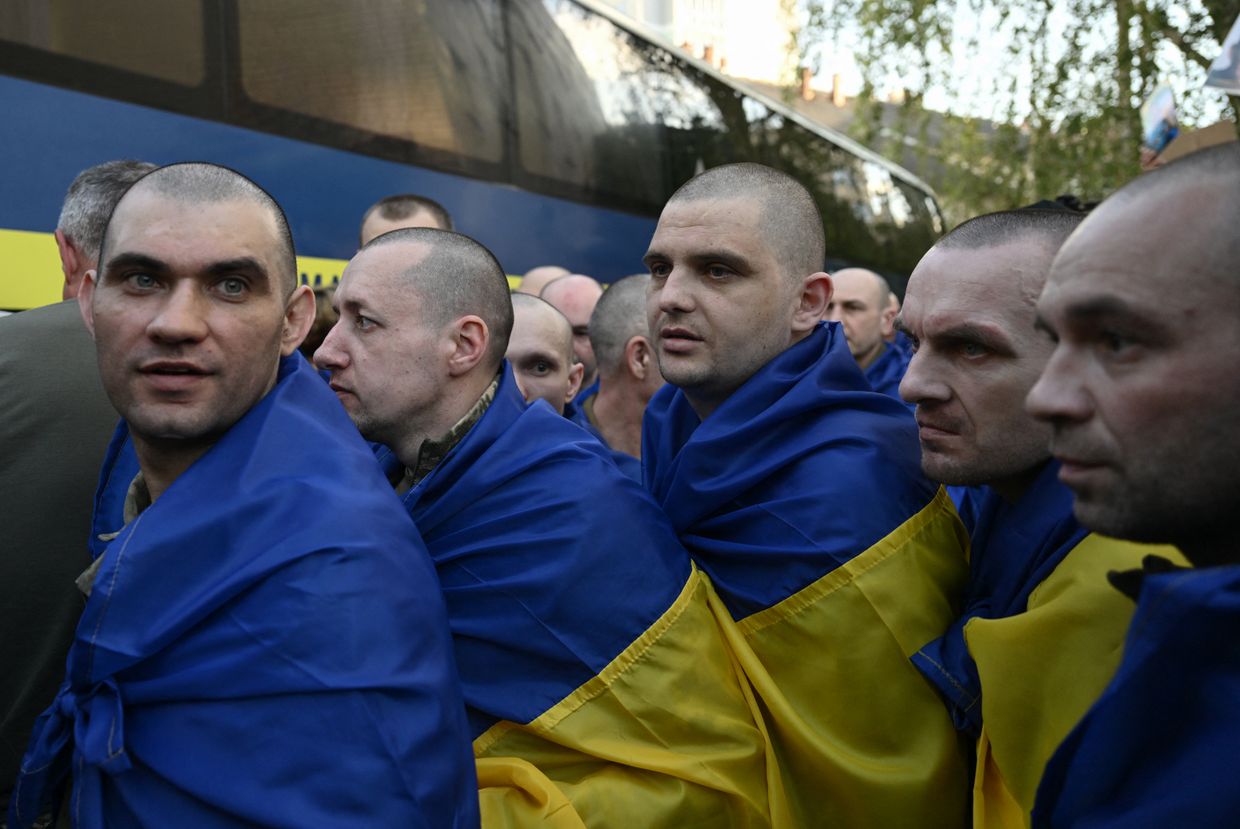Editor’s note: In accordance with the security protocols of the Ukrainian military, soldiers featured in this story are identified by first names and callsigns only.
DONETSK OBLAST – There was already little resembling a road in front of the driver by the time the old pickup truck’s headlights were shut off.
From here up until the drop-off point, he navigates by memory only: the crescent moon hanging over this part of Donetsk Oblast isn’t enough to illuminate the mangled dirt tracks that lead to the zero line.
Passing on by radio that he has turned on the truck’s electronic warfare device, the driver carefully navigates the darkness to the sound of tired, bent brake discs rubbing on the wheel.
Then, the transfer: greetings of “Wish you health” (Ukrainian military salute) exchanged with the waiting soldiers on their way out to the shift change, backpacks and rifles thrown in the back of the truck.
Finally, a short, brisk walk begins, along a line of dead, burnt-out trees decorated in faded green summer foliage.
Marked by a weak red headlamp, the entrance to the positions leads to a long earthen walkway fitted out with wooden planks on each side.
At the end of the walk, the path dips underground, as camouflage netting appears overhead.
These trenches are the last positions held by Ukrainian forces: over the top of the sandbagged firing points is no man’s land, a phrase which keeps all the meaning it acquired in World War I: the gray zone between warring sides, where any movement makes you a target.
Just 150 meters across the uneven ground, in positions that likely look very similar, are Russian soldiers.

These positions defend the northern flank of the mining city of Toretsk, which spent most of Russia’s full-scale war in relative calm despite the proximity of the front line.
The sector is manned by Ukraine’s 28th Mechanized Brigade, one of the country’s most experienced fighting units, which, after playing a leading role in the liberation of Kherson, has been stationed here for over a year and a half.
Having defended the southern flank of Bakhmut with distinction and taken part in limited counteroffensive operations last summer, the brigade settled into a stable defense as Russia focused its efforts elsewhere.
Over the last month, the winds began to change.
Although the unblocked U.S. military aid has started to arrive in Ukraine and Russian forces were stopped in their tracks in Kharkiv Oblast, Moscow has continued to press forward in Donetsk Oblast, looking to capitalize on Kyiv’s ongoing manpower issues.
Taking advantage of a botched rotation of two Ukrainian brigades, Russian forces surged forward outside Toretsk in late June, beginning a new offensive that quickly overran defensive lines which had held strong since fighting in this area began in 2014.

Two and a half years after Russia’s full-scale invasion, the face of Ukraine's foot soldiers, facing the most consistent danger to life over time and suffering the highest casualties, has changed dramatically.
The men manning this position alone represent the diversity of today’s Ukrainian infantry: from former contract soldiers who fought in Donbas before 2022, those sent to the infantry as punishment, those who came out of Russian occupation and signed up, and those who were simply mobilized.
In conditions marked by frightening new weapons of war, it is these people, living in trenches and dugouts like these for months on end, that are the keystone of the defense of the country as a whole.
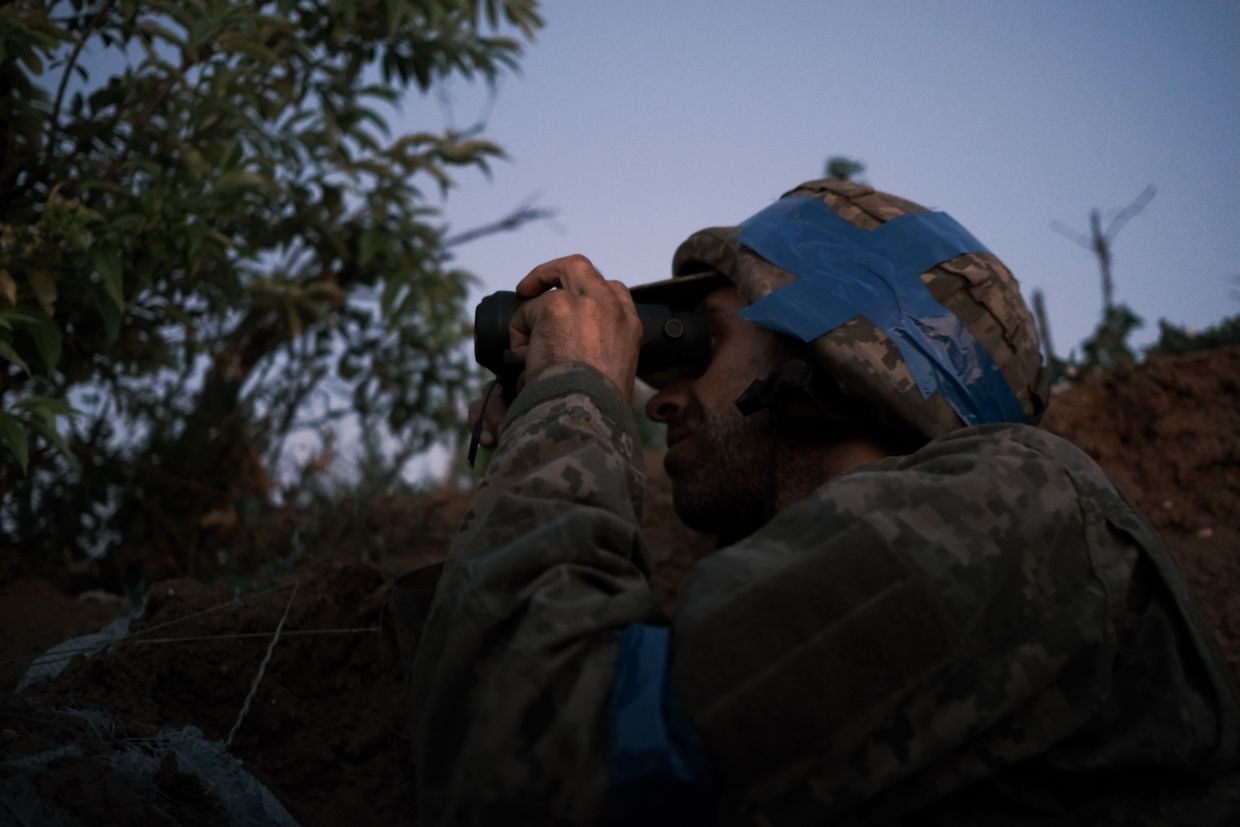
“I saw them, I saw them, they showed themselves!”
Clutching a thermal scope, 39-year-old Oleksandr “Tsyrkul” potters around the position with almost childlike excitement as the sky slowly grows lighter.
Looking carefully over the top through the bright green of the thermal scope, a bright-white spot sticks out from behind a slag heap, from which rounds can be seen firing up into the air at a low angle.
As pleased as he is to have spotted the enemy, it isn’t immediately clear what exactly the little white dot represented. At dawn, when drones have greatly limited vision there is no obvious way of targeting whatever it is anyway.
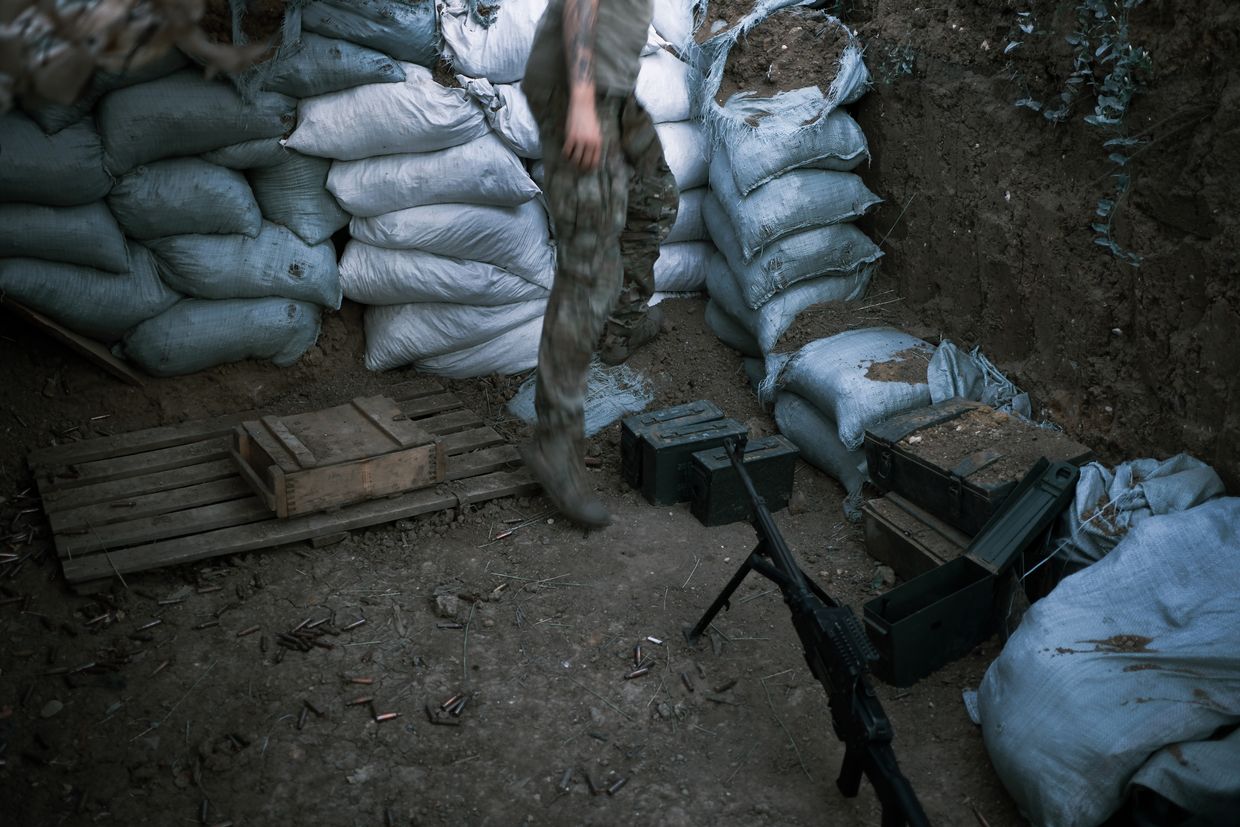
With a short but lean, hunched-over figure and an oversized helmet, Tsyrkul, who was drafted a year ago from a village near Vinnytsia, is a stark reminder that the average Ukrainian soldier is far from the super soldier often portrayed on recruiting posters.
Unlike in the first year of the war when tens of thousands of volunteers quickly flooded the ranks of new brigades, the bulk of the Ukrainian army is now made up of mobilized men from rural areas like Tsyrkul.
As he speaks, Tsyrkul’s voice jumps effortlessly between bullish turns of phrase and somber reflection, between beaming grins and long, distant stares.
“I think the war will end in 2025, maybe 2026, then things will get a little easier,” he said, fidgeting endlessly with the muzzle of his rifle.
“But even then I don't think I will go home straight away. If we all go home, they'll come right after us, someone needs to stay here.”

“Infantry is where one day can last six months and six months can pass in a day,” says Yevhen, the 28th Brigade’s press officer, as the first rays of sun begin to enter the trench.
July 2024 has been one of the hottest months on record in Ukraine, and few feel the heat more than the country’s infantry.
Despite the mercury rising quickly with the sun, the soldiers are lucky this time, as a cool, lazy breeze flows straight through the line of the main trench.
On the edge of the position are the firing points, easily accessible for soldiers to surveil their enemy’s movements.
Alongside the old Soviet-era light machine guns that normally adorn a trench like this, one of the positions hosts a modern new machine gun equipped with a remote, electronic aiming system.
The camouflage nets here are noticeably singed: just two days earlier, the position was targeted by Grad multiple rocket launcher fire, making a mess out of the trenches which quickly needed addressing.
The position is manned by seven infantrymen in total. Officially, they rotate sentry duty between them every three hours.
In reality, most people try to get more sleep when they get the chance, and when awake, will mill around under the net, drinking coffee, and passing the time on their phones.
Since last year, when most of them moved here, these positions have been their permanent home, through rain, hail, or shine: each man leaves the trenches for just one day a week to shower and purchase supplies.
Despite its location in the heart of Donetsk Oblast, this has been a quieter part of the front line for the better part of the last year, mainly due to the presence of the Siversky Donets-Donbas canal, which runs in between the two sides as a natural barrier to progress.
Further north, the same waterway, which Ukrainian forces fell back to last month, is now crucial to the defense of the city of Chasiv Yar.
“Of course, they are not getting across the canal any time soon,” said 40-year-old Oleksandr “Dynia,” “but we shoot at each other in any case.”
Whether due to the canal, the clear skies, or more likely the extreme heat, the day is a quiet one.
Mortar and howitzer rounds whistle over the position at a steady interval, but nothing lands too close for comfort.
At this stage in the war though, the greatest immediate danger to infantry in positions like this is not traditional artillery, but drones.
Both Ukraine and Russia use a similar fleet of drones at the front lines: a mix of fixed-wing reconnaissance craft, civilian quadcopters repurposed for surveillance and bombing, and thousands of cheap, suicide FPV (first-person view) drones.
The quadcopters largely produce the same sounds no matter which side is flying them, but as the soldiers say, a drone flying parallel to Ukrainian trenches is usually a clear giveaway that the pilot is Russian, searching for a target.
“You get used to everything that is flying around,” said Dynia, “sometimes you can hear it when it's coming for you, sometimes the sky just says hello.”

In conversation with every one of the infantrymen, one name constantly comes up in all their stories: Netailove.
Fifty kilometers southwest of here, the small village of Netailove is located in a completely different sector of the front line, just outside the destroyed and occupied city of Avdiivka.
In the spring of this year, their company was separated from the rest of its battalion and the 28th Brigade as a whole, sent to help stop the steady hemorrhaging of territory in the area that began after the fall of Avdiivka in February and continues to this day.
The decision, made by higher-ranking Ukrainian commanders who the soldiers here mockingly call “geniuses,” was emblematic of a systematic tendency to split brigades apart and micromanage down to the company level that has recently become a subject of common complaint from soldiers and analysts alike.
Caught under heavy bombardment and constant assault without being able to properly set up their positions and learn the lay of the land, the company (usually around 100 people at full strength but in practice often just a few dozen) suffered heavy casualties, with four killed and over a dozen wounded.
“I didn't like quiet days before, because I hadn't seen death yet,” pondered Tsyrkul at his firing position. “But since I saw it (in Netailove), it’s better quiet than loud.”
“Since then, I often feel the need to sleep in my armor and helmet, I'm not joking…” he paused. “I joke a lot, but not this time.”

As the Ukrainian army continues to grapple with a severe shortage of new infantrymen, increased scrutiny has been placed on how higher command makes use of the manpower that they do have available.
When mistakes are made or resources misused, the cost is measured in the lives of Ukrainian infantry lost unnecessarily, something the men here are all too familiar with.
“We were transferred there and then we returned just like that…” recalled Dynia about his time in Netailove, pausing frequently, “...those of us that were left, I mean. Some of the guys lay down there and didn’t get up... they were good guys, warriors, all of them, truly.”
Dynia, a native of Kirovohrad Oblast in the country’s center, has one 19-year-old son, who came of age when the full-scale war had already begun.
“What can I tell him about this? He is young, he has his own things going on in life,” said Dynia about their wartime relationship.
“We don't really talk... it would be nice if we could talk more often. I will just do what I can so that he doesn't end up here himself.”

In the early afternoon, Tsyrkul joins shift commander Mykola “Koks” to work on their ongoing DIY project: a new dugout for their position.
Just three days before, a targeted Russian drone attack set fire to their previous underground shelter, burning and collapsing it from the inside out.
Having a proper place to shelter in the face of sustained artillery fire and drone drops is more essential than ever; starting again from scratch, they must not waste any time.
Stripping down to their torsos in the face of the 35-degree heat, the two men install new wooden flooring crudely cut to size with a chainsaw.
“This is the last wood that we are going to have here,” said Koks. “It’s no longer possible to deliver it all the way to the zero, it’s too easy to spot.”

Koks, a 42-year-old native of Zhytomyr with a bald head and a long, biker-style beard, has spent the whole of the full-scale war in this part of Donetsk Oblast.
First serving with a separate reconnaissance battalion, he was sent to the infantry a year ago as punishment, after a personal conflict with his commanders turned violent.
“People say infantry is bad, but I prefer it here,” he said, “the command in this brigade is alright, we understand them and they seem to understand us.”
“Here, you don't feel used, you feel like you are treated like a person.”
Koks’ previous experience and firm communication style led him to be chosen as the senior in command at this position.
“It's not bad, I like it. Yes, they are killing us, but still…” he said, his speech tapering off.
“When you share your last piece of bread or drop of water at the positions because they can't resupply us, when you find yourself in the middle of hell, you understand who your real brothers are, who the real men are. The real men are the ones that are here.”
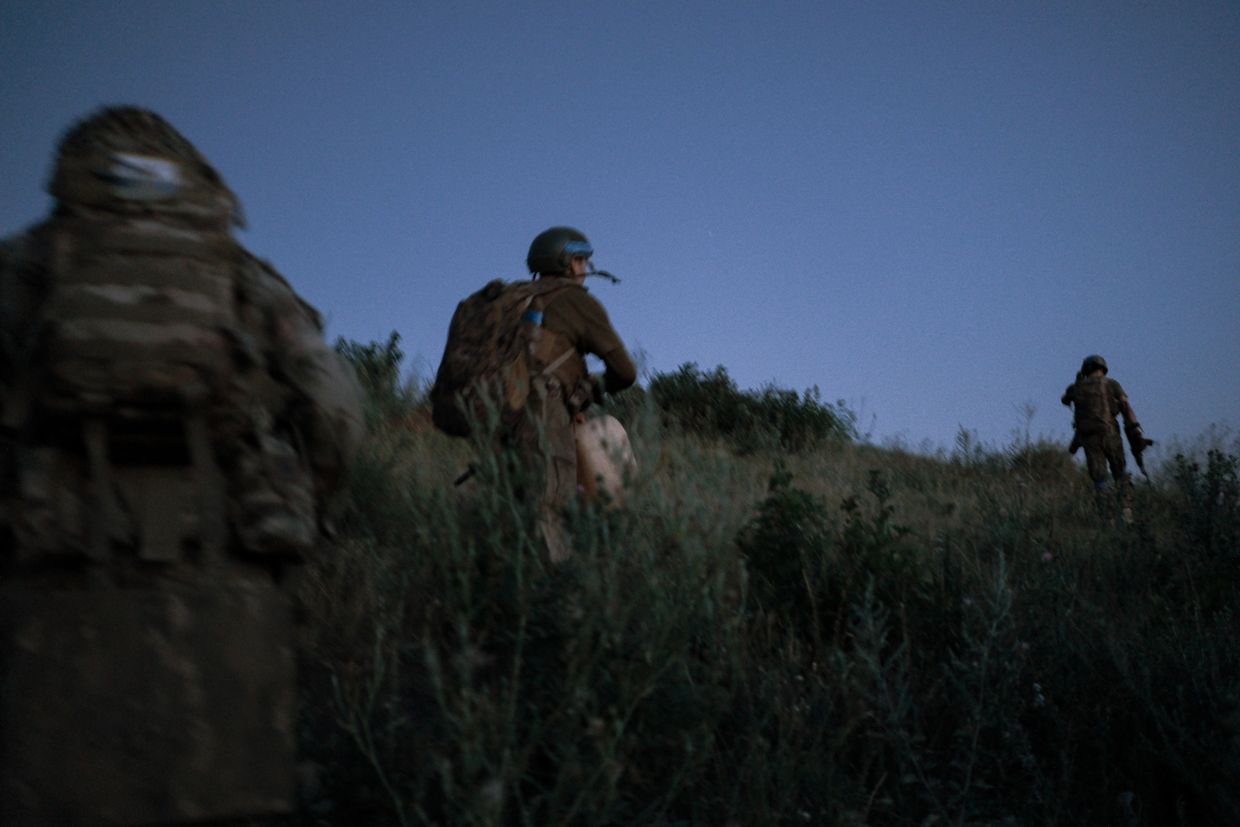
As the clock nears 10 in the evening and the blood-red sun dips under the horizon in the rear, it is time to leave the positions, together with rifleman Ihor “Fartovyi,” (“Lucky”) whose turn it is to take a day off.
This time, there is no car to pick up the shift change, so the soldiers must hike about three kilometers out from the zero on foot to safety. On the way, other infantrymen rotating out from neighboring positions join the party.
Twisted carcasses of civilian cars — all destroyed by FPV drones — litter the roadside, a testament to the fact that front-line mobility is nothing like what it used to be.
Up ahead, a wall of dark smoke rises from behind in front of a large slag heap to the south.
This is the village of Druzhba, where just five kilometers away from these trenches, Russian forces are actively assaulting Ukrainian lines, and where losing territory could leave the infantry of the 28th exposed on their right flank.
Back at the unit’s headquarters, 40-year-old company commander Oleksandr “Chermet” watches his sector’s reconnaissance feed, where drones with thermal cameras have taken over the night shift.
“Recently, the character of the fighting has changed in this area, we can see an escalation,” said the commander, referring to the activation of the Toretsk front line.
“The enemy is beginning to conduct assaults and trying to advance not too far from us, and we can see them preparing in our area too.
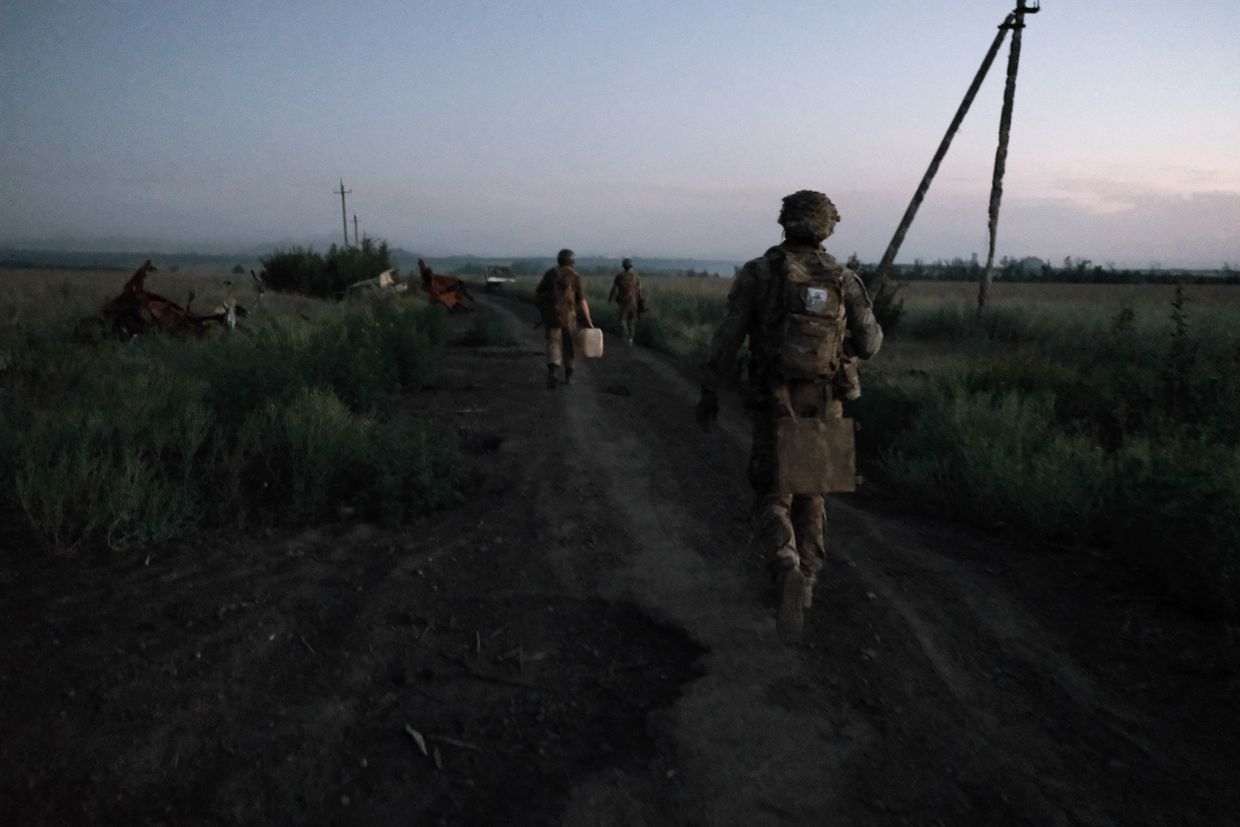
With the coming of night, the soldiers on position are finally given some work: Chermet tasks the remote control machine gun to fire short bursts towards a dugout where movement was spotted.
The soldiers quickly send back videos recorded by the gun’s scope; the sound of the intermittent, automated bursts seems almost peaceful in the silent dugout.
In how he speaks about them, Chermet conveys care and concern for the men fighting under his watch.
But with that care comes the need to remain grounded in the painful reality of this war, an understanding that for now, there is no immediate way out of their predicament.
“You can see that they are a bit tired, physically, mentally, but what can you do, we can't just retreat,” he said.
“Everyone understands this, and they give their all to make sure the enemy doesn't go further.”

Here, the commander’s words echoed those of Tsyrkul, who had remained overnight at the zero:
“It gets really scary here to be honest, especially when they tell you that they could be attacking very soon,” he said, looking up at the evening sky.
“For the moment, we are holding, and after that... well, after that, we will keep holding, I guess, for as long as we are alive.”
Note from the author:
Hi, this is Francis Farrell, cheers for reading this article. I hope that news about Russia making gains across the front line hasn't come as a surprise to you. Things are moving fast, and not in the direction we would like, but whatever happens, we are dedicated to continue being Ukraine's voice to the world, no matter how dangerous and dark this war gets. Please consider supporting our reporting.






